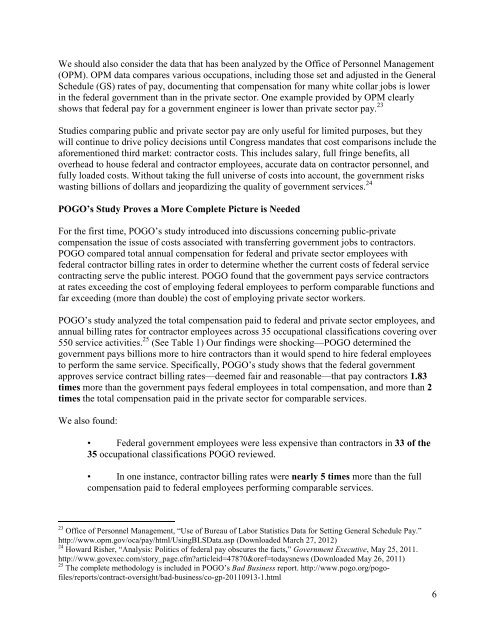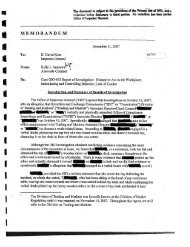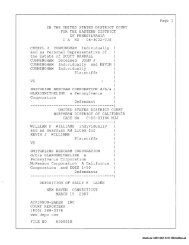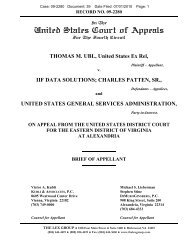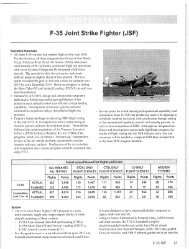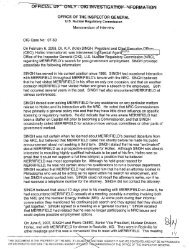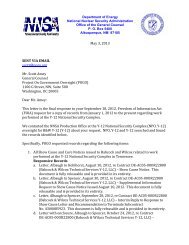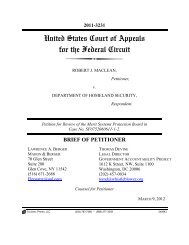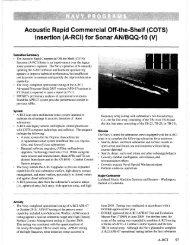SA McCaskill Cost Hearing Final 03 29 12 - U.S. Senate Homeland ...
SA McCaskill Cost Hearing Final 03 29 12 - U.S. Senate Homeland ...
SA McCaskill Cost Hearing Final 03 29 12 - U.S. Senate Homeland ...
Create successful ePaper yourself
Turn your PDF publications into a flip-book with our unique Google optimized e-Paper software.
We should also consider the data that has been analyzed by the Office of Personnel Management<br />
(OPM). OPM data compares various occupations, including those set and adjusted in the General<br />
Schedule (GS) rates of pay, documenting that compensation for many white collar jobs is lower<br />
in the federal government than in the private sector. One example provided by OPM clearly<br />
shows that federal pay for a government engineer is lower than private sector pay. 23<br />
Studies comparing public and private sector pay are only useful for limited purposes, but they<br />
will continue to drive policy decisions until Congress mandates that cost comparisons include the<br />
aforementioned third market: contractor costs. This includes salary, full fringe benefits, all<br />
overhead to house federal and contractor employees, accurate data on contractor personnel, and<br />
fully loaded costs. Without taking the full universe of costs into account, the government risks<br />
wasting billions of dollars and jeopardizing the quality of government services. 24<br />
POGO’s Study Proves a More Complete Picture is Needed<br />
For the first time, POGO’s study introduced into discussions concerning public-private<br />
compensation the issue of costs associated with transferring government jobs to contractors.<br />
POGO compared total annual compensation for federal and private sector employees with<br />
federal contractor billing rates in order to determine whether the current costs of federal service<br />
contracting serve the public interest. POGO found that the government pays service contractors<br />
at rates exceeding the cost of employing federal employees to perform comparable functions and<br />
far exceeding (more than double) the cost of employing private sector workers.<br />
POGO’s study analyzed the total compensation paid to federal and private sector employees, and<br />
annual billing rates for contractor employees across 35 occupational classifications covering over<br />
550 service activities. 25 (See Table 1) Our findings were shocking—POGO determined the<br />
government pays billions more to hire contractors than it would spend to hire federal employees<br />
to perform the same service. Specifically, POGO’s study shows that the federal government<br />
approves service contract billing rates—deemed fair and reasonable—that pay contractors 1.83<br />
times more than the government pays federal employees in total compensation, and more than 2<br />
times the total compensation paid in the private sector for comparable services.<br />
We also found:<br />
• Federal government employees were less expensive than contractors in 33 of the<br />
35 occupational classifications POGO reviewed.<br />
• In one instance, contractor billing rates were nearly 5 times more than the full<br />
compensation paid to federal employees performing comparable services.<br />
23 Office of Personnel Management, “Use of Bureau of Labor Statistics Data for Setting General Schedule Pay.”<br />
http://www.opm.gov/oca/pay/html/UsingBLSData.asp (Downloaded March 27, 20<strong>12</strong>)<br />
24 Howard Risher, “Analysis: Politics of federal pay obscures the facts,” Government Executive, May 25, 2011.<br />
http://www.govexec.com/story_page.cfm?articleid=47870&oref=todaysnews (Downloaded May 26, 2011)<br />
25 The complete methodology is included in POGO’s Bad Business report. http://www.pogo.org/pogofiles/reports/contract-oversight/bad-business/co-gp-20110913-1.html<br />
6


